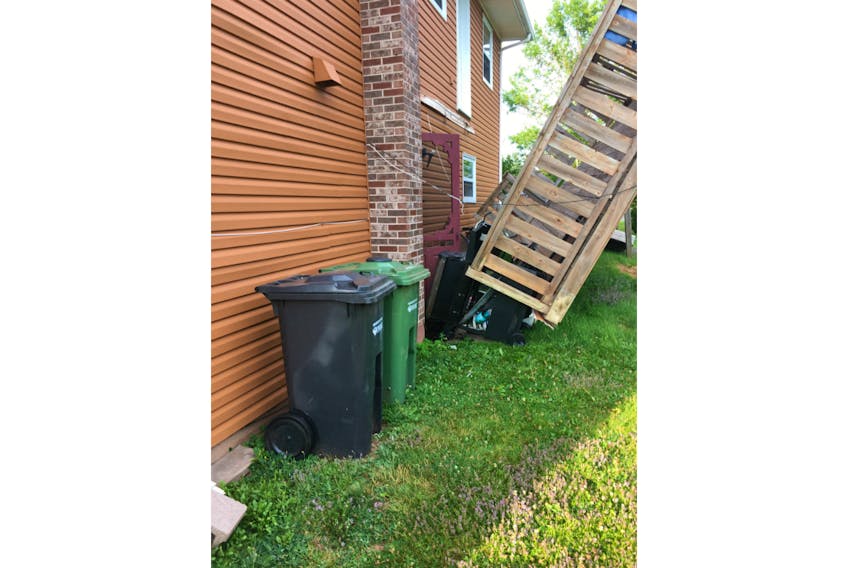BY JOHN CRITTENDEN
GUEST OPINION
As a retired architect, I look keenly at articles on construction, and as such there are a few things that should be elaborated on for the readers of your article in Saturday’s Guardian on the deck which collapsed.
I looked for any information that might use this failure as a way to bring about a greater understanding of this relatively common event. Your industry contact, Mr. Sanderson, said incidents happen for “no apparent reason.” I think he meant that you usually can’t see it coming until it happens. Every failure has a reason that, after the failure occurs, is usually readily apparent, but it can usually be identified before problems occur.
RELATED: Charlottetown woman recovering in hospital after deck she was on collapsed
He said, “make sure there’s no gaps”. What is he talking about? If the deck is sagging or pulling away from the wall it is soon to fail and should be fixed immediately, but what is occurring, what should a homeowner look for? By the time there’s gaps, a person is lucky they are not in the hospital.
The detailing of the point of attachment to the house is usually the reason for failure, and poor details are more common than you might think.
That is obviously what happened to the poor woman in the article. A proper connection would have a 1/2” to 3/4” gap between the deck construction and the house to allow rain and meltwater from snow to flush through; this prevents rot from forming in the deck timbers, and/or in the adjacent wood of the house framing.
Frequently the rim joist is just nailed directly to the house construction, a formula for premature rot and failure. If someone has this situation, even with treated deck framing, this will be the primary point of failure. What happens is trapped moisture is never allowed to dry out causing rot in the wood the fasteners are connected to, consequently the wood no longer has any holding strength and the fasteners pull out. I have seen this time and again.
Note that it only took one woman on the deck to cause the failure and the entire connection to the wall pulled off. What if she had been planning a party?
It would be quite obvious, on closer inspection, to identify the culprit(s), which would, in turn, confirm what I have said.
It might be time for a public interest story on decks, a source of tremendous pleasure all summer and in the shoulder seasons.
Remember, a gap, or a properly flashed connection, for a long-lasting support at the wall.
- John Crittenden is a retired northern regions architect who spends summers on P.E.I.








